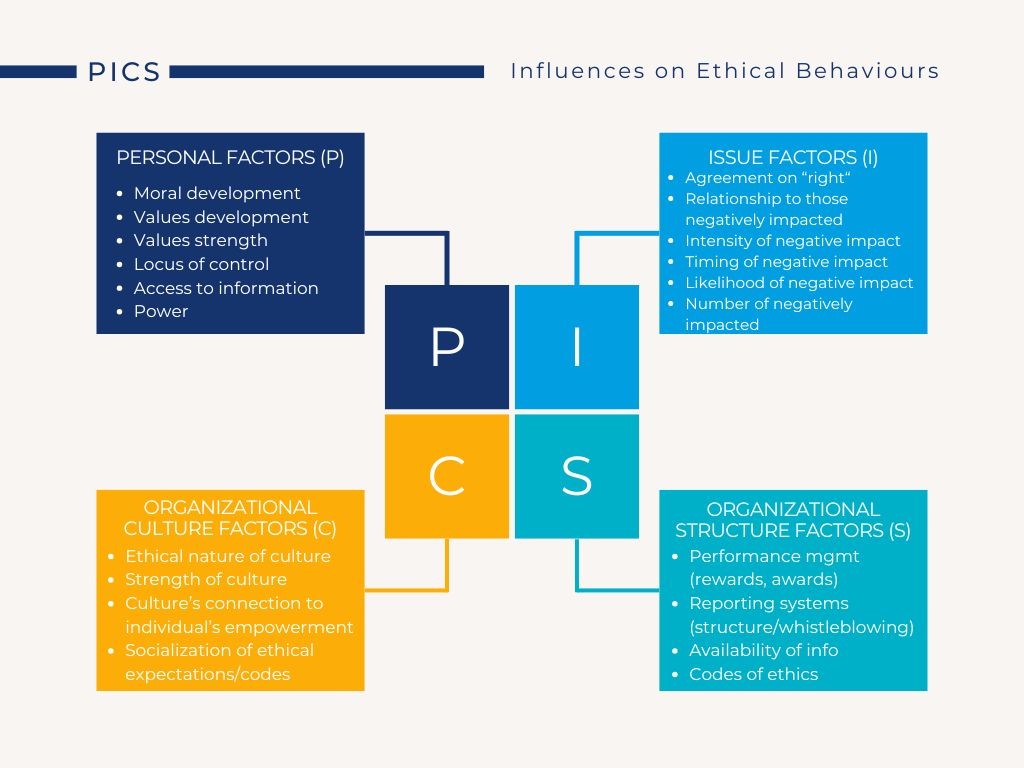Part 2 – Influences on Ethical Decision-Making
As introduced in Chapter 4, individual’s actions be they ethical or unethical in an organization are influenced by four key areas, Personal, Issue, organizational Culture, and organizational Structure (PICS) factors. In this part of the book, we will go deeper into each of the PICS factors to understand how they influence individual employees to take particular actions.

As we look at the PISC model, we need to see that these factors can either enhance or hinder the likelihood that someone will make an ethical decision. In other words, if we have more of these factors, it increases our empowerment, another way to look at it is likelihood, of making an ethical decision or action. If those factors are missing or working against the person, it may hinder them from choosing what is ethical. Even ethical people act unethical depending on these factors’ influences on them in a given situation.

